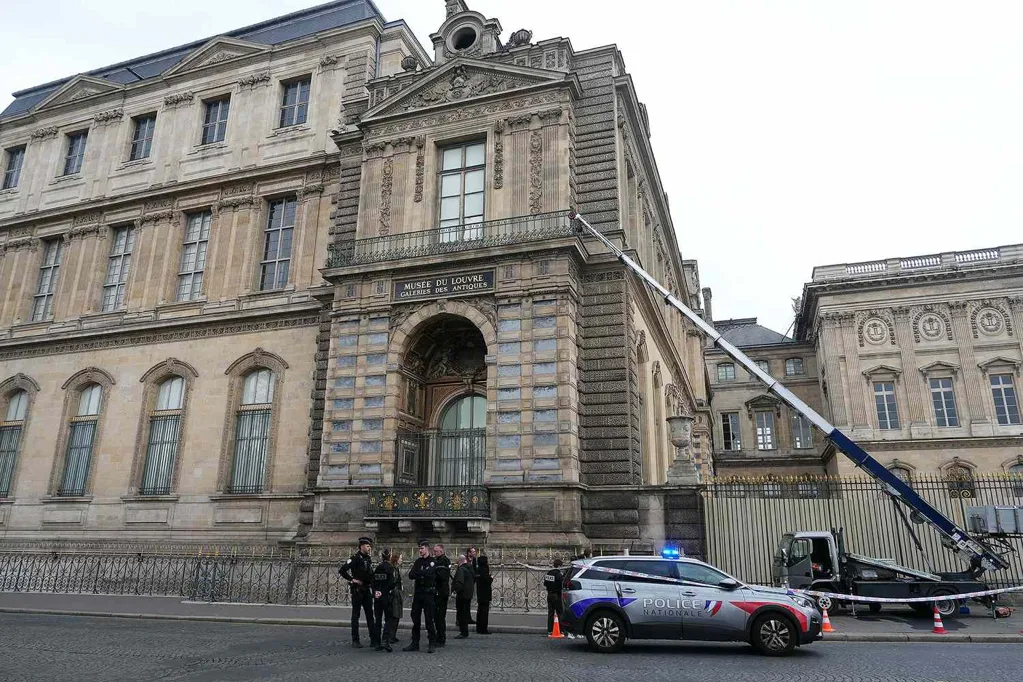Among the glittering jewels taken were tiaras belonging to former empresses, as well as a matching emerald set gifted by Napoleon to his second wife, Marie Louise, on their wedding day.
Authorities are intensifying their hunt for the thieves behind the brazen Louvre heist and the stolen French crown jewels once worn by Napoleon's family.
About 60 investigators are working to track down the four thieves and the historic pieces they stole in just seven minutes, France 24 reports.
The glittering haul includes an emerald and diamond necklace and earrings set that Emperor Napoleon gave second wife, Marie-Louise of Austria, as a wedding gift in 1810.
A specialized Paris-based police unit known as the BRB, which handles high-profile robberies, is also on the case, Reuters reports.
On Sunday, Oct. 19, the thieves stole nine pieces from display cases in the ornate Apollo Gallery on an upper floor of the storied museum, not far from where the iconic Mona Lisa hangs.
In their haste to get away, they accidentally dropped a diamond-and-emerald-encrusted crown that once belonged to Empress Eugénie, the third wife of Napoleon's nephew, Napoleon III.
Art theft expert Anthony Amore says he believes the thieves carefully planned the spectacular heist.
"The way that this one was perpetrated though makes me wonder if they had some inside information," Amore, a bestselling author whose latest book, The Rembrandt Heist, debuts Nov. 4, tells PEOPLE.
"To do it in the morning just after the museum opened means that they knew that that gallery was not packed with people in the world's busiest museum," he says.
"They went into the Apollo Gallery confident that they weren't going to be in a packed room, which tells me something.
"They may have been casing the place for a very long time, but one way or the other, they had a really good knowledge of how things operate."
If, as authorities believe, the thieves plan to melt down the pieces and sell the jewels separately, "that will make it difficult for a consumer to understand that they're buying something hot," he says.
Selling each stone individually might be the easiest way for the thieves to sell the jewels, however, considering that law enforcement is on high alert. "It's easier to fence than a Rembrandt painting," he says.
The stunning crime, which French President Emmanuel Macron called an "attack" on the entire country, unfolded at 9:30 a.m., just after the museum opened.
As tourists and art lovers began filing into the landmark building through the glass-enclosed Louvre Pyramid, four thieves in ski masks pulled up to the side of the building facing the Seine River in a small truck outfitted with a mechanized ladder.
Two of the thieves wearing yellow vests climbed the ladder to a balcony and used tools to cut through the glass of the window leading to the opulent Galerie d'Apollon - the Apollo Gallery.
Inside the gilded room, they used power tools to smash the glass of the display cases housing the crown jewels.
Alarms screeched and guards raced to the gallery as the thieves ran off, fleeing on lightning-fast Yamaha scooters.
"Art thieves are not like serial killers," says Amore. "They don't leave calling cards or a signature of their crime. They just want to get the loot and get out, and that's what they did."
